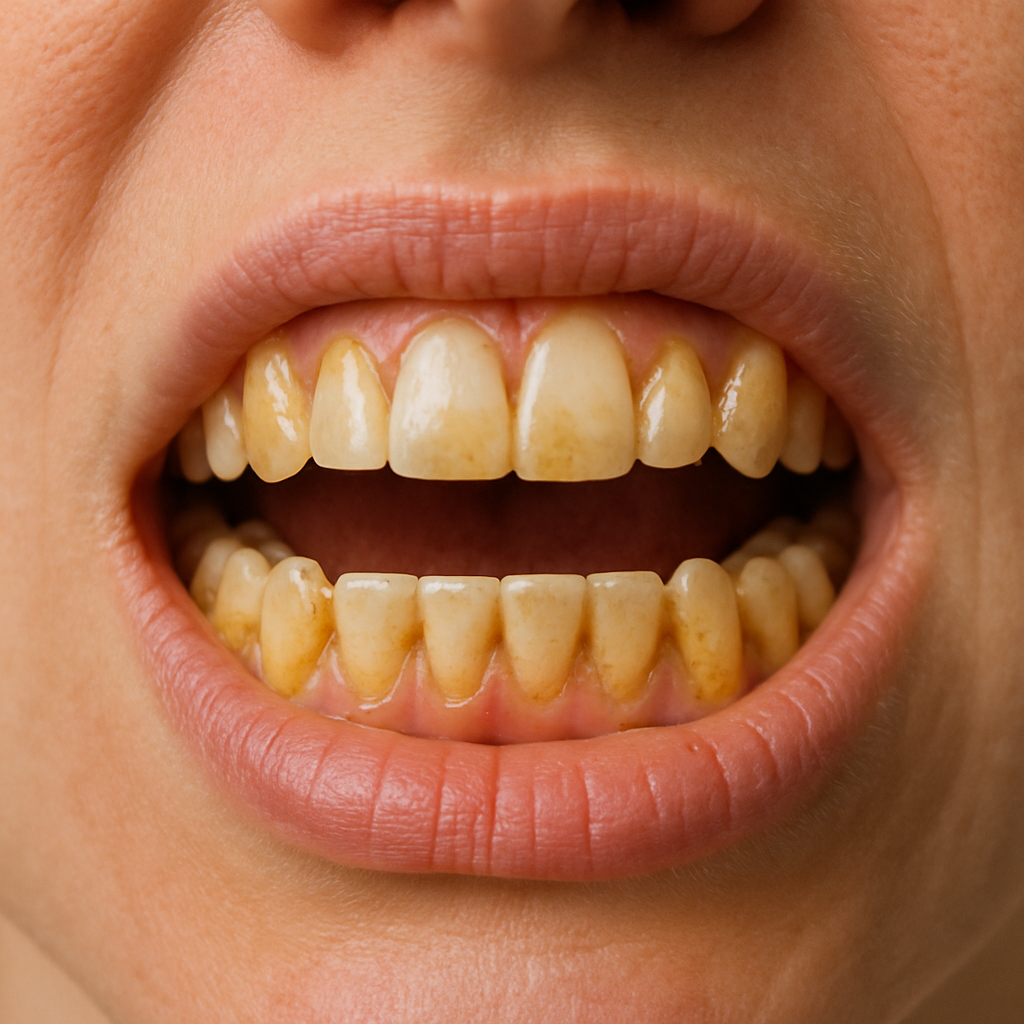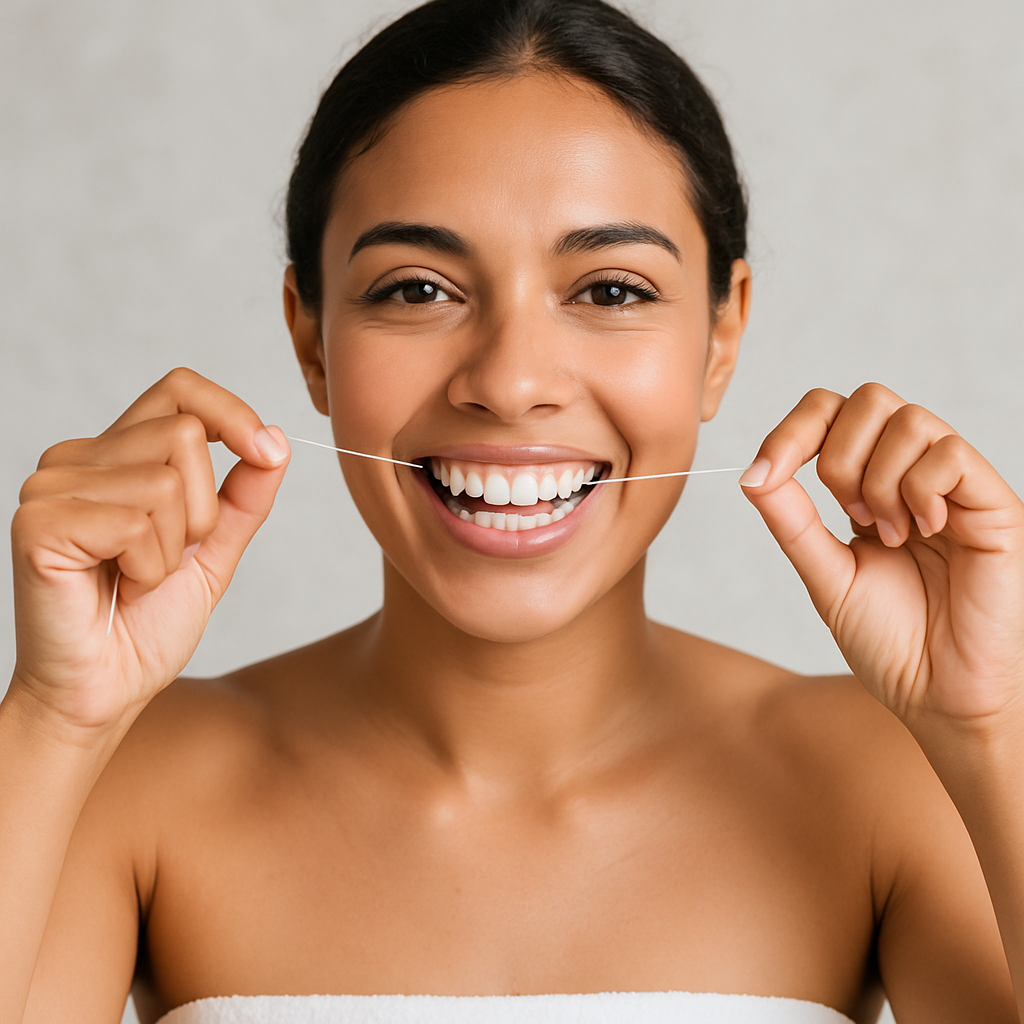Who does not want a sparkling white smile? In the process of trying to get whiter teeth, we sometimes ask ourselves whether some of these oral hygiene habits will work. The most common question arising is; does flossing help whiten teeth?
Now that the dawdlers are gone we can get to the point: No, just the simple act of flossing does not directly whiten your teeth, that is, alter their underlying shade of color.
No doubt, flossing is a totally, completely essential part of a proper oral care regimen, this is primarily true because it is not meant to change the chemical composition of your tooth enamel, meaning its natural color. Therefore, you can be somewhat dissatisfied with direct bleaching effects in case you are consistently flossing in order to get the Hollywood flash.

The Tooth Discoloration Science: Intrinsic vs Extrinsic Stains
In order to realize the effects of flossing on the color of teeth, it is important to distinguish two types of commonly found teeth stains; the extrinsic tooth stain and the intrinsic tooth stain.
Extrinsic Stains
These types of stains are deposited on the enamel surface part of your teeth. They mainly occur as a result of:
- Chromogenic bacteria: Foods and drinks which are dark in color (e.g., coffee, tea, red wine, berries, soda) contain pigmented substances. These substances stick to protein pellicle ( a thin film on your teeth).
- Tannins: Tannins which are present in tea and wine increase the capacity of chromogenic to adhere to the enamel.
- Smoking/Tobacco Use: Nicotine and tar are some of the most apt to stubborn brown and black stains.
- Ineffective Oral Hygiene: Ineffective brushing and flossing allows plaque and food particulate to linger on the surfaces of the teeth, a clingy base in which staining agents stick to.
Intrinsic Stains
These are stains which are in deeper recesses of a tooth; i.e. within the dentin (the inner layer under the enamel). They are quite difficult to eliminate and are usually occasioned by:
- Aging: As we grow older, we find most enamels become thinner allowing the underlying more yellowish dentin to show.
- Genetics: Other people are whiter or yellower tendentious of their teeth.
- Some Drugs: Tetracycline antibiotics (particularly, when used before the teeth are fully formed) are known to cause such intrinsic stains as gray or brown.
- Consuming Fluoride Excess (Fluorosis): This may result in spots of white and brown stains.
- Tooth Trauma: May discolor the Tooth.
- Dental Restorations: Fillings (Silver amalgams) are unattractive and may produce a gray shadow on the tooth.
Flossing has major effects on extrinsic stains as well as factors that lead to the same. It is simply insignificant on natural stains and those stains simply need professional help or whitening chemicals to deal with it.
What Flossing Really Does? The Mechanics of Cleanliness
Flossing plays a critical role in maintaining oral hygiene by cleaning the areas that your toothbrush simply can’t reach. While brushing removes plaque from the outer surfaces of your teeth, flossing targets the tight spaces and hidden zones where harmful bacteria thrive. Here’s how it works:
1. Between the Teeth (Interproximal Surfaces)
The narrow gaps between your teeth, called interproximal surfaces, are prime spots for food particles and plaque to accumulate. Toothbrush bristles are too thick and inflexible to reach into these tight spaces effectively. Flossing mechanically dislodges debris and scrapes away plaque from these hard to reach areas, reducing the risk of cavities and gum disease.
2. Just Below the Gumline (Gingival Sulcus)
Each tooth is surrounded by a shallow groove where the gum meets the tooth this is known as the gingival sulcus. It’s a sensitive area that can easily harbor plaque and harmful bacteria. If not cleaned properly, these bacteria can trigger inflammation, leading to gingivitis and eventually periodontitis. Flossing helps gently clean just beneath the gumline without damaging the delicate gum tissue, disrupting early plaque formation and promoting healthier gums.
Why Flossing Matters?
Neglecting to floss means about 35% of your tooth surfaces remain uncleaned. Over time, this can lead to:
- Gum inflammation and bleeding
- Tartar buildup
- Bad breath
- Increased risk of tooth decay and gum disease
What Flossing Prevents?

Plaque Buildup
A bio film of uncured bacteria that is sticky and colorless, always building along the teeth. Plaque serves as a contacting surface to the chromogenic as plaque serves as a magnet that attaches chromogenic. The plaque will harden to tartar (calculus) in 24-72 hours given the circumstances of not being interfered with.
Tartar Formation (Calculus)
Stagnant plaque which develops into hard deposits and sticks consistently to your teeth that cannot be eliminated through brushing or flossing. Tartar is frequently yellowish, brownish and sometimes black, and its rough surface with holes easily picks up stains, which is a major factor to a dulled and discolored look. The gums are also irritated by tartar.
Gum Disease (Gingivitis and Periodontitis)
It is inflammation and infection of the gums, due to bacterial plaque. Gingivitis (mild gum disease) causes inflammation, gums that are red, swollen and bleed. Advanced gum disease (periodontitis) may cause the loss of bones and eventually tooth loss. To have a good looking smile, it would be crucial to have healthy gums because gums with inflammation might divert the appreciation of the teeth and would not like to appear in the mouth.
Cavities (Dental Caries)
Hole in your teeth formed by the acids formed by the bacteria that eats sugar in your mouth. Other ones like cavities especially those that appear well could be seen as dark spots, which are very poor in whitening up your smile.
Benefits of Flossing Toward a Brighter Looking Smile
Although flossing does not bleach, its regular practice will definitely make your smile more bright, clean, and healthy in a number of important aspects:

1. Stops and Cleans New Extrinsic Stains
By making a concerted effort to clean any food material, plaque, and pellicle off of between and beneath your teeth and on the gum line, flossing will actively thwart the process of staining agents (chromogenic) cling and settle into these locations. Considering you have freshly spilled coffee and you can wipe it up before it can get absorbed into a cloth. A frequent flossing routine cleans these surfaces thus minimizing chances of added stains development and even magically rubbing away severely recent surface stains.
2. Reduces the accumulation of tartar
Probably the most substantial indirect effect of a brighter smile. Tartar is discolored in itself (usually yellow, brown or black) and a sponge to additional stains. Flossing has the incredible ability to inhibit the hardening of the plaque so that it turns into tartar and therefore leaves your teeth clear of the discolored material. Although it is well known that it is the work of a dental professional to remove any existing tartar, frequent floss can guarantee that not as much tartar will ever (and is very visible) develop in the first place, so it will look a lot cleaner and hence brighter.
3. Supports Gums and Improves the Aesthetics of Smile
Fit, pink gums are formidable and present your teeth in a beautiful frame. Red, inflamed, or swollen gums (a sure sign of the effect of the lack of flossing), which make the whole smile look not so attractive and even unhealthy. With healthy gums they recede a little away when they are touched because of hygienic maintenance and the teeth look less hidden and an overall look is of clean and shiny teeth.
4. Makes Whitening Products More Effective
In case you want to use the over the counter or professional teeth whitening products (toothpastes, strips, gels), flossing will be even more necessary. Filing up between any two teeth involved, flossing also removes any plaque and food particles on your tooth surfaces, so the whitening mixtures (such as hydrogen peroxide or Carbamide peroxide) have a clear path to your enamel, and the active whitening components can directly contact your enamel, in one ideal direction, and backed up by identical contact. This will enable uniform and efficient whitening to be attained since the bleaching compound is not blocked in any way. You may have uneven whitening where you have missed some spot because you are not flossing.
5. Keeps General Oral Hygiene
A beautiful mouth is a healthy mouth. Avoiding your cavity, oral diseases and foul smells by flossing regularly will have an overall effect of oral health that will show in the way your smile looks. A happy smile comes out when your teeth are without decay and your gums are not subjected too much disease.
Synergy of Oral Care
Notice, that flossing is not a cure of a white smile. It can be used along with other key practices:
- Brushing Daily: Use toothbrush that has soft bristles along with fluoride toothpaste at least two minutes, twice a day.
- Routine visit to the dentist and dental cleaning: A dentist and hygienist can clean up the existing tartar, brush out the tenacious extrinsic stains and spot any underlying problems.
- Food and Drinks: Avoid the intake of highly staining food and drinks and rinse your mouth with water after taking it.
- Abandon Tobacco: Smoking and chewing tobacco cause serious disorders in teeth color.
Conclusion
It is a common misconception that flossing can whitening your teeth Even Flossing is an uncompromising element of a complete oral hygiene rinse. Although it cannot actively cause chemical bleaching of your teeth, it is instrumental in preventing the deposition of plaque and tartar, healthy gums, and prevention of tooth cavities all of which are the key to a cleaner, healthier mouth and brighten Smile.
